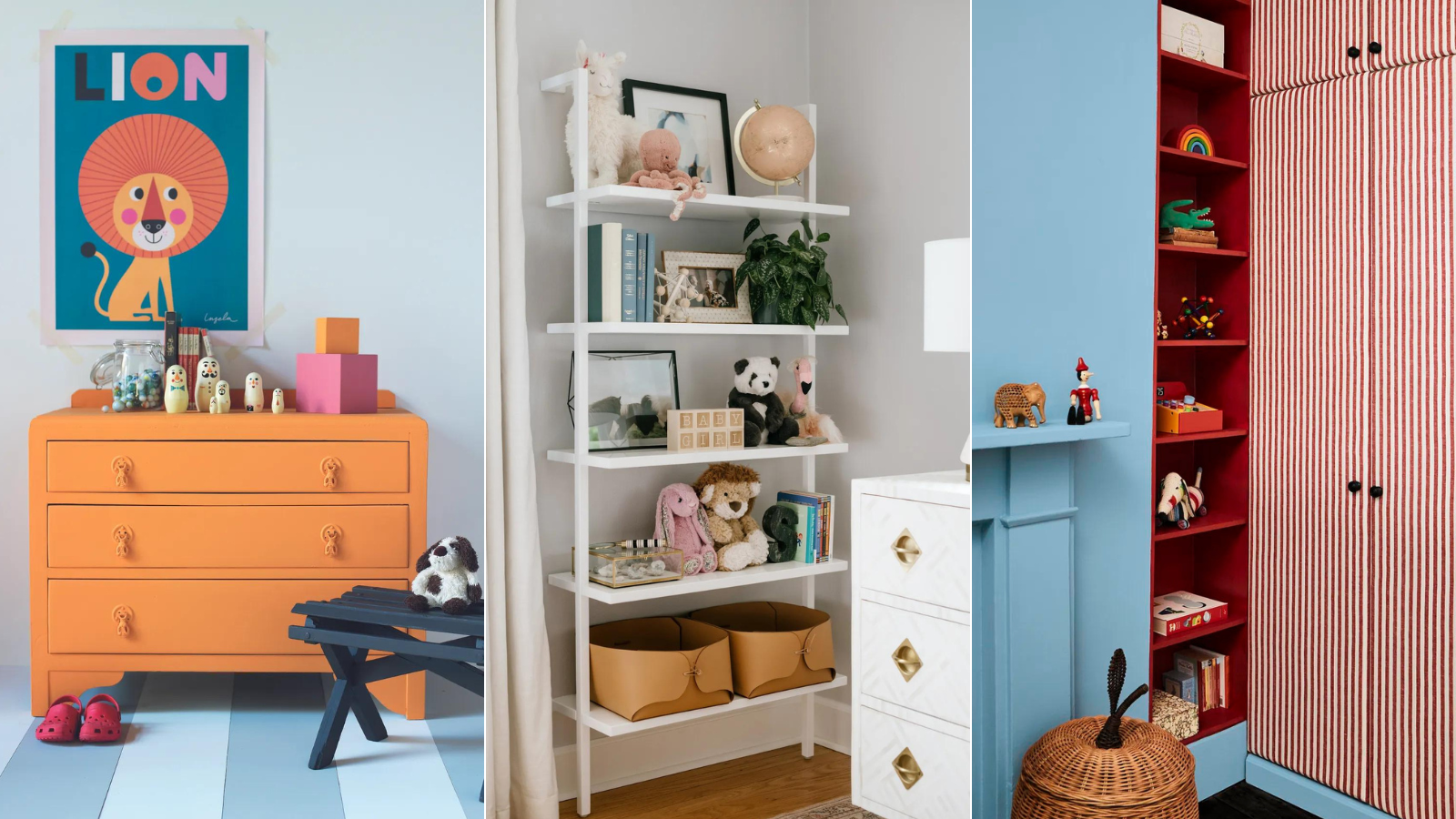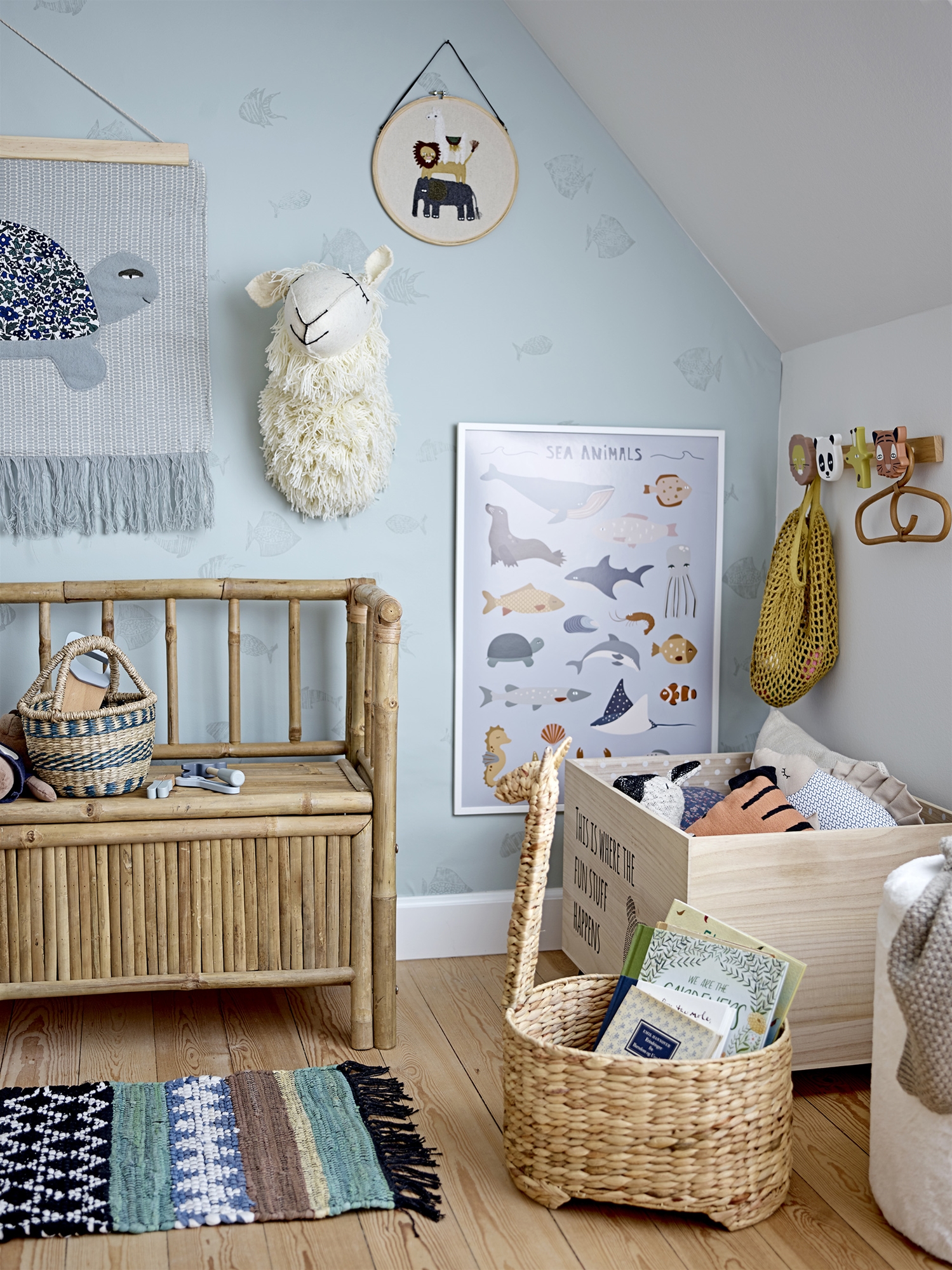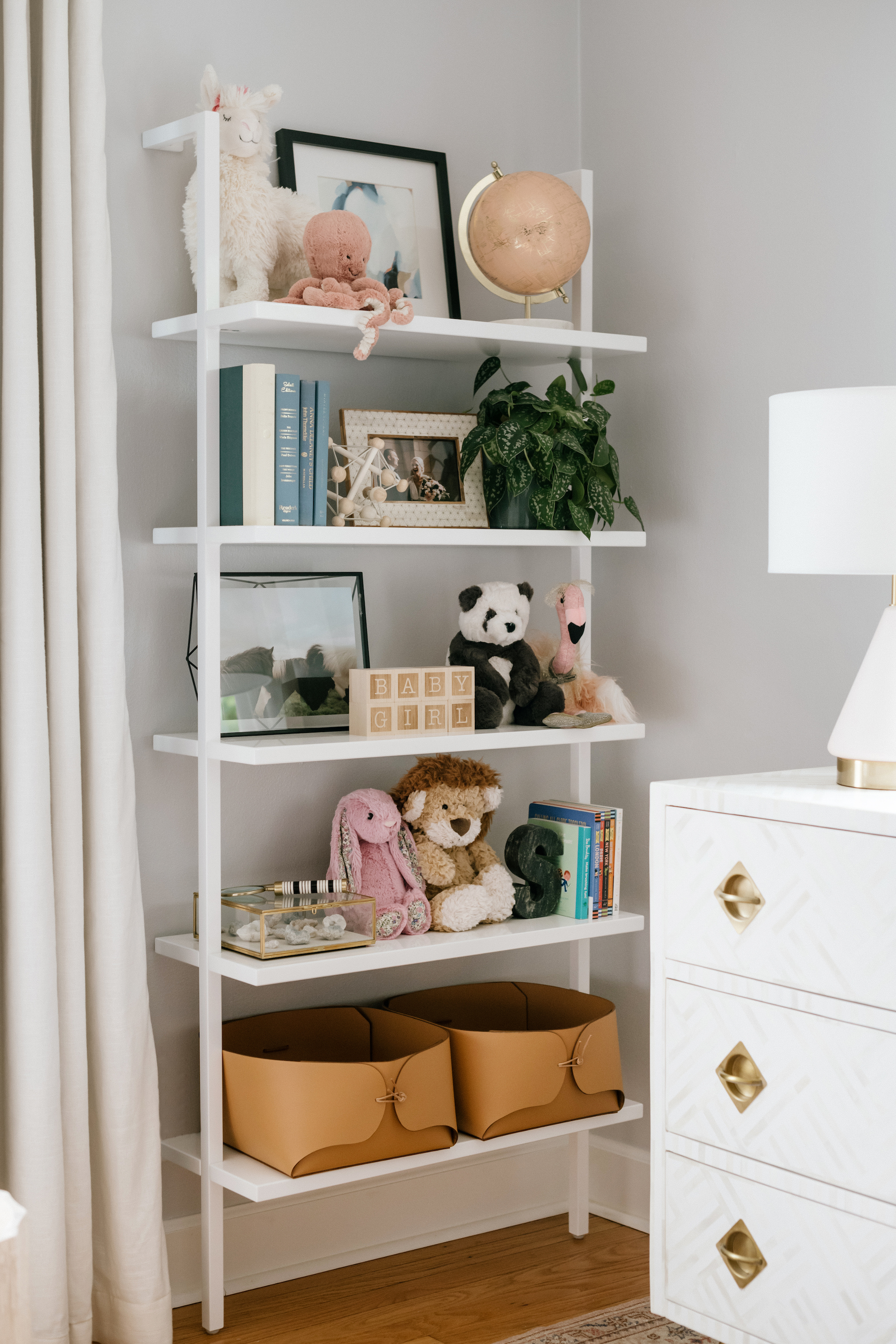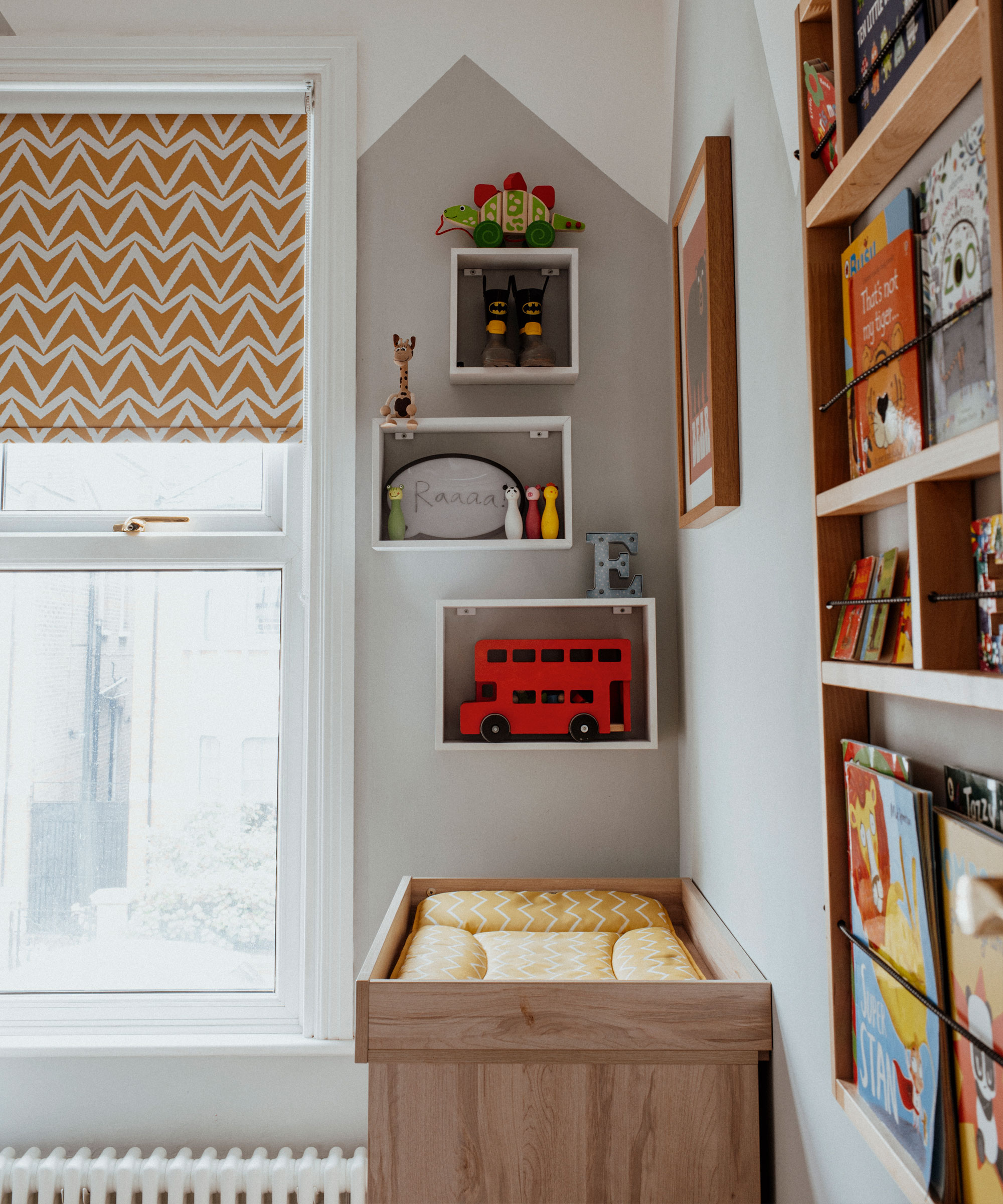How to declutter toys when your children aren’t on board – ways to minimize meltdowns
Decluttering toys when your children aren’t on board may feel impossible, but it can be done – here’s how

The thought of decluttering toys when your children aren’t on board with the idea is downright terrifying. Rest assured, there are ways to get the job done that don’t involve tears and tantrums from your little ones – or from you.
If you’re feeling the guilt, know this; decluttering toys is actually a really positive thing for your children. Too much choice can result in indecision and a lack of focus, so organizing a playroom with less ‘stuff’ is actually doing them a big favor, despite what they may think!
So, we know it’s a good thing, but how do you declutter when your family isn’t on board? Doing it without them around can feel like the easiest option, but while it may get you quick results, it’s really not worth it in the long run. Remember, the end goal goes beyond tidy toy storage ideas; you want to encourage your family to declutter so they develop a positive association going forwards, for their sake and for yours!
How to declutter toys when children aren’t on board
We’ve put together a list of top tips and techniques for decluttering and organizing toys that will make the process quick and easy, perhaps even enjoyable, for all involved.
1. Watch your children play

If you ask your children, every toy is their favorite toy, but in reality, there’s likely a lot they no longer love. The last thing you want to do is inflict any declutter regret, so spend time observing your children at play. After a couple of weeks, you should have a good idea of which toys won’t be missed.
‘If you’re unsure about a particular toy, put it to one side and ask your child about it. The last thing you want to do is throw away a beloved possession or clear their bedroom without permission. Aside from breaking trust, this can potentially contribute to hoarding tendencies later in life’, warns expert organizer Kate Ibbotson, APDO member and founder of A Tidy Mind.
2. Take the pressure off – and lead by example
You know your child best, but as a general rule, don’t push too hard – a ruthless approach to decluttering is likely to result in unnecessary upset, particularly if your child is already resistant to the idea. If you want them to develop positive associations with decluttering, experts recommend playing the long game instead.
‘If your children see you regularly sorting and editing your own things, perhaps even help you to do it, it becomes expected and naturally learned behavior. They're still likely to find it difficult to let go of their toys, but the concept will become familiar and far less scary over time’, says Laura Price, founder of The Home Organisation.
3. Be flexible

It’s important to remember that just like adults, a child’s things often hold a great deal of emotional significance – the process of decluttering sentimental things can be difficult for them. It’s ok to have rough goals in mind, but avoid putting anything hard and fast in place. Not just in terms of time frames but also in terms of what you’re getting rid of.
‘Don’t feel you have to get rid of toys just because they’re not age-appropriate. Often a toy we think our child has grown out of offers comfort, and as their imagination develops, they start playing with it in a different way. On the flip side, don’t assume a younger sibling isn’t capable – they’ll never know if they don’t try’, says childcare expert and professional organizer Kathryn Lord, founder of More to Organising.
4. Don’t tackle too much at once
Children’s attention spans are shorter than those of adults, so if you try to tackle too much at once, they’re likely to lose interest. Rather than scheduling decluttering sessions, you’re better off grabbing opportunities when you can – be sure to take your child’s mood into account beforehand, though.
‘It could be once every few weeks or when you're already on the ground playing with your child. Simply scan the room and the closet or bins to see what toys aren't used, loved or may be broken’, advises professional home organizer Britnee Tanner.
5. Start with the easiest tasks
Completed coloring books, holey socks, stained t-shirts, broken toys… these sorts of items are easy to discard. They’re more like trash, really. However small the breakthrough, pile on the praise – there’s no such thing as too much when it comes to encouragement.
As your child becomes comfortable with this process, you can start to build it up. Next time you declutter, ask them to seek out duplicates, too. Then move on to more sentimental categories, such as decluttering clothes or organizing children’s books, for example.
6. Make it fun

It may be overwhelming at times, but the process of decluttering with your children can actually be really good fun. Create a party atmosphere by sticking on some music and have snacks to hand.
7. Explain the importance of sharing
‘Ahead of decluttering, sit down with your children and decide where to donate their unloved or unwanted toys, a family support center shelter or a local charity, for example. Explain how their contribution makes a positive difference and encourage them to feel happy and proud of their decision to share’, suggests professional home organizer Brenda Scott, founder of Tidy My Space.
8. Introduce a ‘maybe’ box
To make the decluttering process less intense, allow your children a ‘maybe’ box, just like you would when decluttering your closet. Any items they’re unsure of can be placed inside and stored elsewhere for a few weeks. Let them know they can have them back, but rest assured that ‘out of sight, out of mind’ usually applies – if they don’t miss any items in that time, you can feel confident in moving them on elsewhere.
This technique works for adults, too, particularly those who struggle to declutter when feeling overwhelmed.
9. Agree on a toy rotation system

Reassure your child that decluttering doesn’t always mean getting rid of toys altogether. Rotating toys on a regular basis allows them to keep hold of as many as they like yet still reap the benefits of a clutter-free play space.
Start with two or three boxes (try these clear-lidded containers from Target) per child and fill each with a mix of toy types. Depending on your system, you could rotate these on a weekly, monthly, or tri-monthly basis.
If you notice certain toys never leave the boxes, remove them from the rotation. Like with the maybe box, keep hold of them for a few weeks to see if they’re missed. If not, pass them on.
10. Reward them
Once your child has completed a decluttering task, however small it may be, reward them with something. Not with more toys, though, as that defeats the whole point. A trip to the park or their favorite healthy snack is a fun idea.
They’ll soon start to associate decluttering with positive feelings, and you’ll find it gets easier and easier to get them on board.
FAQs

How do you declutter too many toys?
Start by getting rid of anything that’s broken or no longer serves a purpose – this is quick and easy to do and reduces things, making the task ahead feel more manageable. Next, group items into categories. Try to limit the toys to just a few types and donate any extras, as well as any items that your child has outgrown.
However fun you make it, decluttering toys is never going to be at the top of your children’s to-do list. The more manageable it is, the easier it’ll be to get them on board, so we’d recommend instilling a one-in-one-out rule going forward. For every toy that comes in, they have to get rid of one. They’ll soon get into the habit, and it’ll help to keep clutter from building up again.
Sign up to the Homes & Gardens newsletter
Design expertise in your inbox – from inspiring decorating ideas and beautiful celebrity homes to practical gardening advice and shopping round-ups.
For 10 years, Tara King worked as a Content Editor in the magazine industry, before leaving to become freelance, covering interior design, wellbeing, craft and homemaking. As well as writing for Ideal Home, Style at Home, Country Homes & Interiors, Tara’s keen eye for styling combined with a passion for creating a happy – and functional – family home has led to a series of organization and cleaning features for H&G.
-
 These are the 6 must-have colors to decorate with in April 2025
These are the 6 must-have colors to decorate with in April 2025What do retro-inspired yellows and beautiful blues all have in common? They're on our hot list for the season ahead
By Sophia Pouget de St Victor Published
-
 Plants never to grow next to fruit trees
Plants never to grow next to fruit treesExpert advice on which plants to keep away from fruit trees to encourage a healthy harvest
By Jacky Parker Published